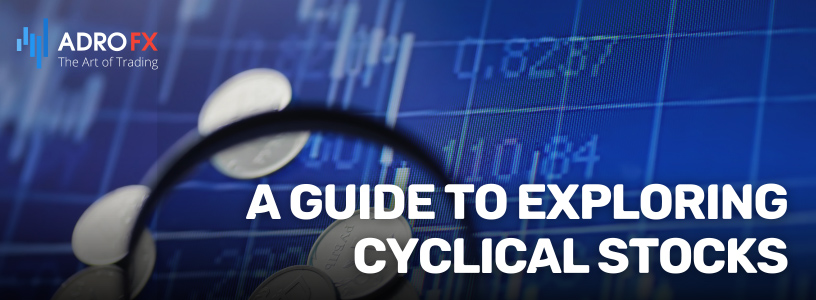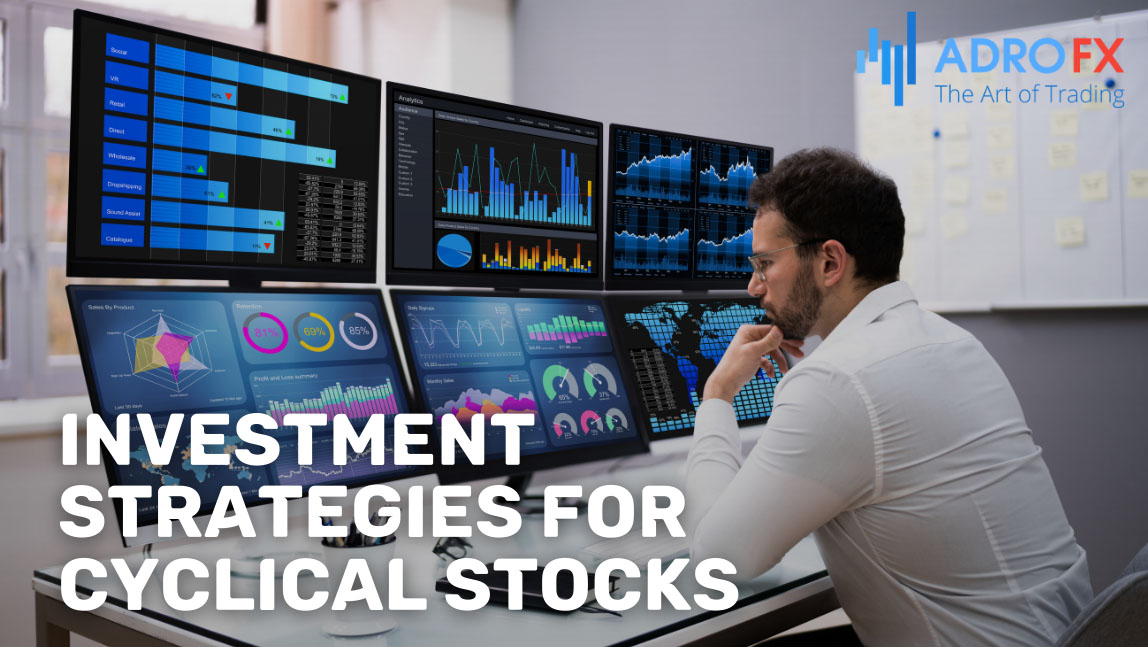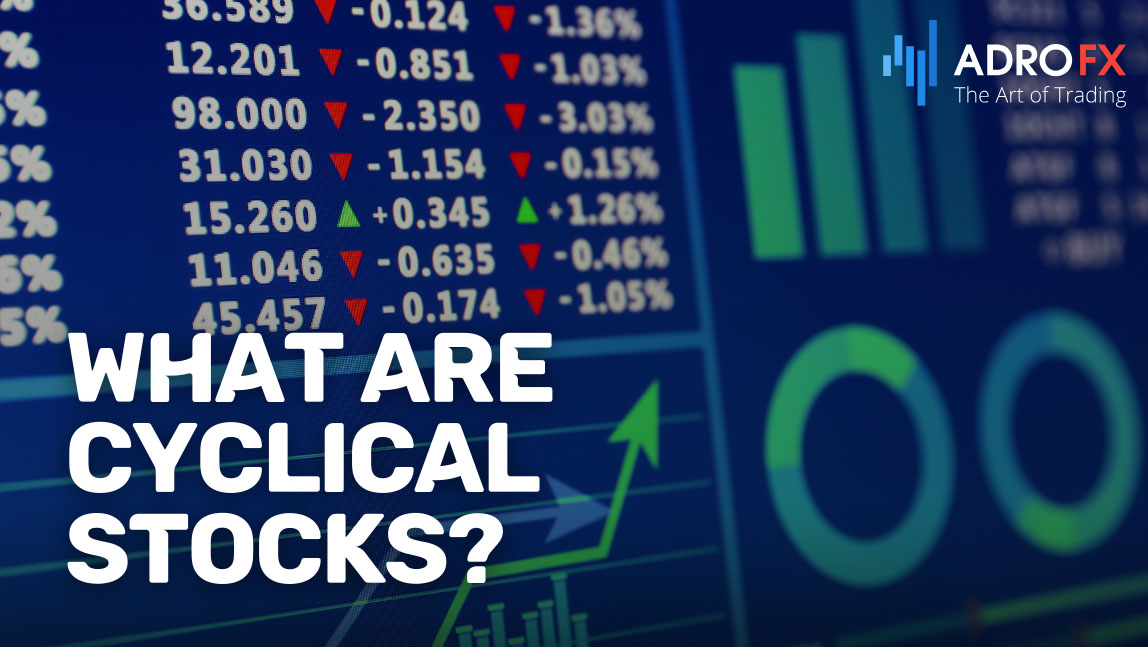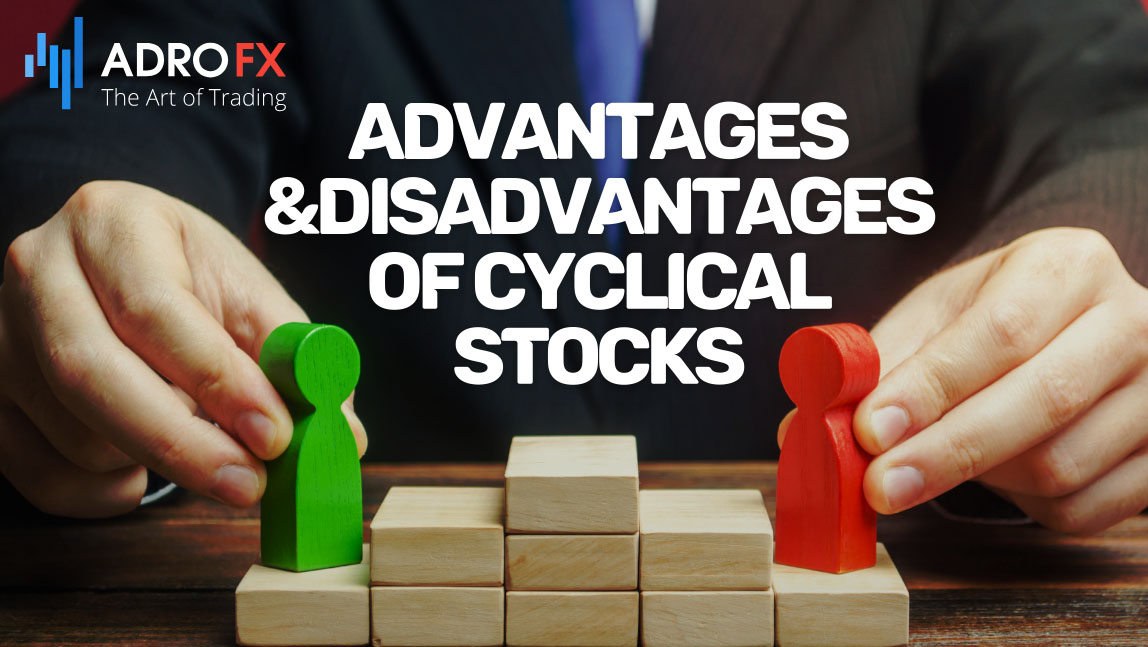A Guide to Exploring Cyclical Stocks

In financial markets, understanding the diverse nature of stocks is paramount for investors seeking to navigate the complexities of investment strategies. Among the two major categories are cyclical and non-cyclical stocks, each presenting unique characteristics and considerations. This article delves into the essence of cyclical stocks, exploring their ties to economic cycles and the inherent advantages and risks they bring to investors. Subsequently, it unravels the world of non-cyclical stocks, often regarded as defensive investments, highlighting their resilience and stability amid economic uncertainties. By comprehending the nuances of these stock types, investors can make informed decisions aligned with their risk tolerance and broader market outlook.
What Are Cyclical Stocks?
Cyclical stocks refer to shares of companies whose performance and profitability are closely tied to the economic cycle. These companies are highly sensitive to economic conditions, and their fortunes tend to rise and fall with the overall health of the economy. As a result, their stock prices often follow economic cycles of expansion and contraction.
Key characteristics of cyclical stocks include:
- Economic Sensitivity
Cyclical stocks are typically linked to sectors that experience fluctuations in demand based on economic conditions. These sectors include industries such as manufacturing, construction, automotive, travel, and consumer discretionary. - Performance Variability
The earnings and revenues of cyclical companies can vary significantly over different phases of the economic cycle. During economic expansions, these companies may experience increased demand, leading to higher profits. Conversely, during economic contractions, demand may decline, impacting their financial performance. - Beta Value
Cyclical stocks often have a higher beta value compared to the overall market. Beta measures a stock's volatility in relation to the broader market. A beta greater than 1 indicates higher volatility, reflecting the sensitivity of cyclical stocks to economic changes. - Examples of Cyclical Sectors
Some sectors are more cyclical than others. Industries such as automotive, housing and construction, travel and leisure, and consumer durables are considered cyclical. In contrast, defensive sectors like utilities and healthcare are less cyclical because their products and services are essential regardless of economic conditions. - Investor Behavior
Investors tend to be more optimistic about cyclical stocks during economic upswings, anticipating increased consumer spending and corporate investments. Conversely, during economic downturns, investors may become more cautious about these stocks.
It's important to note that cyclical stocks are contrasted with defensive stocks. Defensive stocks belong to sectors like utilities, healthcare, and consumer staples, which tend to be more resilient during economic downturns due to the essential nature of their products and services.
Investors should carefully consider economic indicators and the current phase of the economic cycle when investing in cyclical stocks, as their performance can be influenced by broader economic trends.
What Are Non-Cyclical Stocks?
Non-cyclical stocks, also known as defensive stocks, are shares of companies that are considered less sensitive to economic cycles. These companies operate in industries where demand for their products or services remains relatively stable, even during economic downturns. Non-cyclical stocks are often perceived as safer investments because they tend to provide more consistent returns, regardless of the overall economic climate.
Key characteristics of non-cyclical stocks include:
- Stable Demand
Companies in non-cyclical sectors typically offer products or services that are considered essential, and demand for these items remains relatively constant. This stability makes these stocks less susceptible to economic fluctuations. - Defensive Industries
Non-cyclical sectors often include industries such as utilities, healthcare, and consumer staples. Utilities provide essential services like electricity and water. Healthcare companies offer medical services and products that are essential regardless of economic conditions. Consumer staples encompass goods like food, beverages, and household products, which people continue to purchase even in challenging economic times. - Reliable Cash Flow
Non-cyclical stocks are associated with steady and reliable cash flows. Their products or services are necessities, and consumers tend to continue purchasing them, providing a reliable revenue stream for these companies. - Low Beta Value
Non-cyclical stocks typically have a lower beta value compared to the overall market. Beta measures a stock's volatility in relation to the broader market. A lower beta indicates lower volatility, reflecting the relative stability of non-cyclical stocks. - Investor Behavior
Investors often turn to non-cyclical stocks as defensive investments during economic downturns or periods of uncertainty. These stocks are perceived as providing a safe haven because their businesses are less influenced by economic cycles.
Investors may include non-cyclical stocks in their portfolios to add stability and reduce risk, especially during times of economic uncertainty. While non-cyclical stocks may not experience the same level of growth as cyclical stocks during economic expansions, they can provide a defensive position and regular income through dividends.
Advantages of Cyclical Stocks
Investing in cyclical stocks can offer several advantages for investors, but it's important to recognize that these advantages come with risks. Here are some potential advantages of investing in cyclical stocks:
- High Growth Potential During Economic Expansions
Cyclical stocks often experience robust growth during periods of economic expansion. As the economy grows, consumer spending, corporate investments, and industrial activities tend to increase, benefiting companies in cyclical sectors.
- Profitability Opportunities
The cyclical nature of certain sectors allows investors to capitalize on profit opportunities by strategically timing their investments. Buying cyclical stocks during economic downturns when prices are lower and selling during upswings can lead to capital appreciation.
- Dividend Income
Some cyclical stocks, particularly in sectors like industrials and materials, may offer dividend income. Investors seeking income along with the potential for capital gains may find certain cyclical stocks attractive.
- Dynamic Market Conditions
The cyclical nature of these stocks adds dynamism to a portfolio. Investors with a proactive and adaptive approach can adjust their holdings based on economic cycles, potentially maximizing returns.
- Contrarian Investing Opportunities
During economic downturns or periods of market pessimism, cyclical stocks may be undervalued as investors may underestimate their future growth potential. This provides contrarian investors with an opportunity to buy low and potentially benefit from a later upswing.
- Diversification
Including cyclical stocks in a well-diversified portfolio can enhance diversification. The performance of cyclical stocks is often less correlated with other defensive or non-cyclical sectors, providing a hedge against certain market conditions.
Disadvantages and Risks Associated with Cyclical Stocks
Investing in cyclical stocks comes with its share of risks and drawbacks. Understanding these challenges is crucial for investors seeking to navigate the dynamic nature of cyclical industries. Here are some common risks and drawbacks associated with cyclical stocks:
- Economic Sensitivity
Cyclical stocks are highly sensitive to economic conditions. During economic downturns, demand for cyclical goods and services tends to decline, impacting the revenues and profitability of companies in cyclical sectors.
The economic sensitivity of cyclical stocks can lead to significant price declines during recessions or periods of slow economic growth.
- Volatility
Cyclical stocks are often more volatile than non-cyclical stocks. The ups and downs of economic cycles can result in rapid and unpredictable price movements.
Increased volatility can make it challenging for investors to accurately time their entry and exit points, potentially leading to losses.
- Timing Challenges
Successfully investing in cyclical stocks requires accurate timing of economic cycles. Predicting when an economic expansion or contraction will occur is difficult, and mistimed investments may result in suboptimal returns.
Investors may struggle to consistently make well-timed decisions, and mistimed investments could lead to missed opportunities or losses.
- Cyclical Industry-Specific Risks
Each cyclical sector has its own set of risks. For example, commodity price fluctuations can impact materials and energy stocks, while technology stocks may face risks related to rapid obsolescence and technological innovation.
Investors need to be aware of and understand the specific risks associated with the cyclical industry in which they are investing.
- Leverage and Debt Risks
Some companies in cyclical sectors may use leverage to finance operations or expansion. High debt levels can amplify financial challenges during economic downturns.
Companies with high debt loads may struggle to meet their financial obligations, and their stocks may be more vulnerable to downturns.
- Market Sentiment Dependency
Cyclical stocks can be heavily influenced by market sentiment and perceptions about the economy. Negative sentiment or macroeconomic concerns can lead to widespread sell-offs in cyclical sectors.
Investors in cyclical stocks may experience heightened market sentiment-driven fluctuations that are not necessarily reflective of the underlying fundamentals of individual companies.
- Innovation and Structural Changes
Technological advancements and structural changes in industries can impact the competitiveness of certain cyclical stocks. Companies that fail to adapt to changes may face declines in market share.
Investors need to stay vigilant about technological disruptions and industry shifts that could affect the long-term viability of cyclical stocks.
Investors considering cyclical stocks should conduct thorough research, diversify their portfolios, and carefully assess their risk tolerance. Additionally, staying informed about economic indicators and global trends can help investors make more informed decisions in the ever-changing landscape of cyclical industries.

Investment Strategies for Cyclical Stocks
Investing in cyclical stocks demands a strategic approach that takes into account the dynamic nature of economic cycles. Here are some general investment strategies to help investors navigate the complexities associated with cyclical stocks:
- Diversification Strategies
Diversification remains a fundamental principle of sound investing, and it is particularly crucial when dealing with cyclical stocks. Spreading investments across various sectors and industries can help mitigate risks associated with the economic sensitivity of cyclical stocks. While certain sectors may experience downturns during economic contractions, others may remain resilient or even thrive.
- Long-Term vs. Short-Term Approaches
Investors should carefully consider their investment horizon when dealing with cyclical stocks. Long-term investors may choose to weather short-term economic fluctuations, holding onto their positions with the expectation of capitalizing on the growth potential during economic expansions. In contrast, short-term investors might adopt a more tactical approach, capitalizing on shorter-term market movements during specific phases of the economic cycle.
- Monitoring Economic Indicators
Successful investment in cyclical stocks requires a keen eye on economic indicators. Investors should stay informed about leading economic indicators, such as GDP growth rates, employment trends, and consumer spending patterns. Understanding the current phase of the economic cycle can inform investment decisions. For instance, during economic upswings, investors might lean towards cyclical sectors poised for growth, while adopting a more defensive stance during downturns.
- Sector Rotation Strategies
Implementing a sector rotation strategy involves adjusting the allocation of investments based on economic conditions. During periods of economic expansion, sectors like technology, consumer discretionary, and industrials may outperform. In contrast, defensive sectors such as utilities, healthcare, and consumer staples might become more attractive during economic downturns. Investors can strategically rotate their holdings to align with the prevailing economic trends.
- Stress Testing Portfolios
Given the inherent volatility of cyclical stocks, investors should stress-test their portfolios to assess their resilience under various economic scenarios. Conducting scenario analyses and assessing how different economic conditions may impact the portfolio's performance can help investors prepare for unforeseen market challenges.
- Regular Portfolio Reviews
Economic conditions can change rapidly, requiring investors to adapt their strategies accordingly. Regularly reviewing and reassessing portfolio holdings in light of evolving economic indicators, market trends, and geopolitical events is essential. This proactive approach allows investors to make informed decisions and adjust their portfolios to align with the prevailing economic climate.
Remember, while these strategies provide a general framework, individual investors should tailor their approaches based on their risk tolerance, financial goals, and the specific economic conditions at play. Additionally, seeking advice from financial professionals and staying well-informed about market dynamics can further enhance the effectiveness of these strategies.
Conclusion
In the dynamic realm of financial markets, comprehending the distinctions between cyclical and non-cyclical stocks is fundamental for shaping robust investment strategies. Cyclical stocks, known for their sensitivity to economic fluctuations, present enticing prospects for growth and portfolio dynamism. However, the allure of potential advantages is accompanied by the necessity for careful consideration and a proactive approach, given the inherent risks and volatility.
Conversely, non-cyclical stocks, recognized for their stability and resilience, assume a defensive stance during economic downturns. While instilling a sense of security, these stocks feature a distinct risk-return profile. As investors navigate the intricacies of their portfolios, a nuanced understanding of both cyclical and non-cyclical dynamics equips them to make well-informed decisions. Balancing these elements fosters longevity and success amidst the ever-evolving landscape of financial markets. Embracing diversity in stock selection, combining growth potential with stability, and remaining vigilant in the face of changing economic indicators are key pillars for investors striving for enduring success in their financial endeavors.
About AdroFx
Established in 2018, AdroFx is known for its high technology and its ability to deliver high-quality brokerage services in more than 200 countries around the world. AdroFx makes every effort to keep its customers satisfied and to meet all the trading needs of any trader. With the five types of trading accounts, we have all it takes to fit any traders` needs and styles. The company provides access to 115+ trading instruments, including currencies, metals, stocks, and cryptocurrencies, which make it possible to make the most out of trading on the financial markets. Considering all the above, AdroFx is the perfect variant for anyone who doesn't settle for less than the best.












